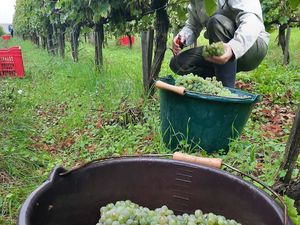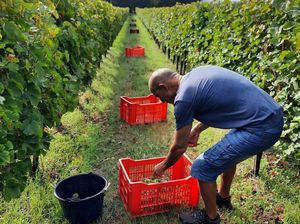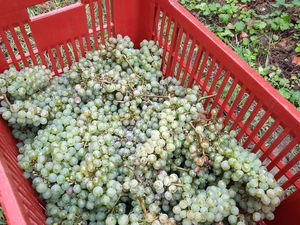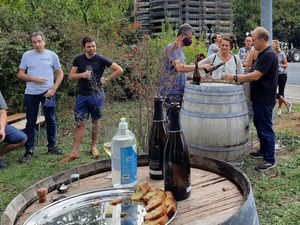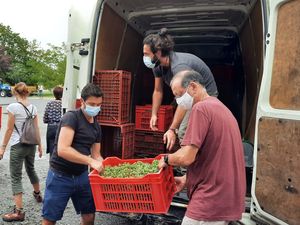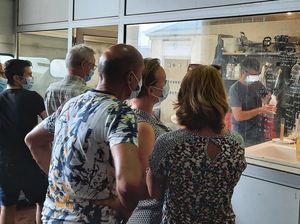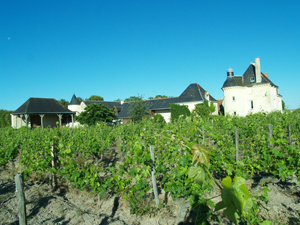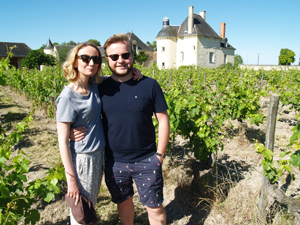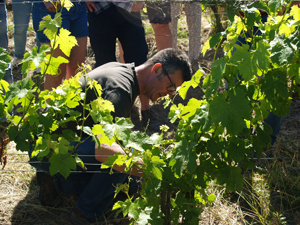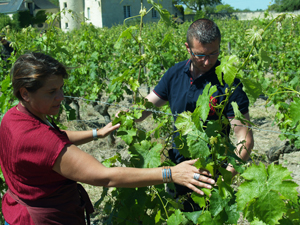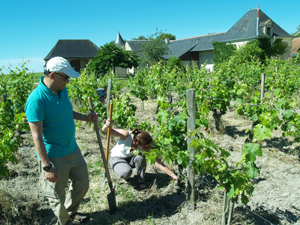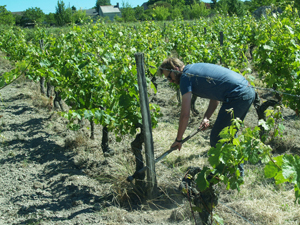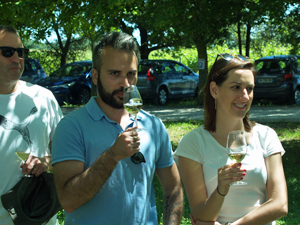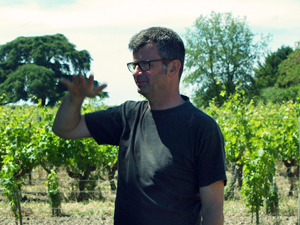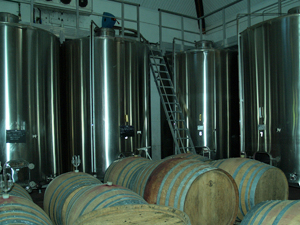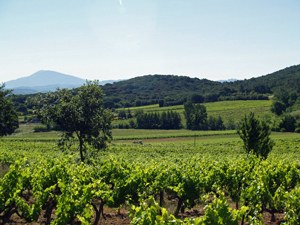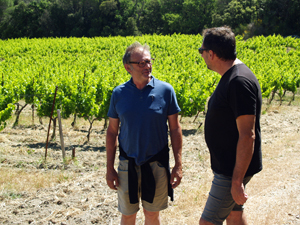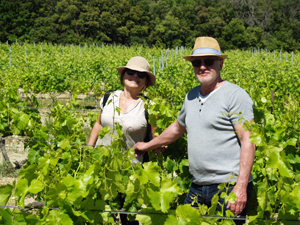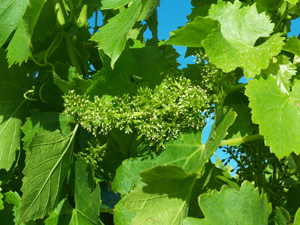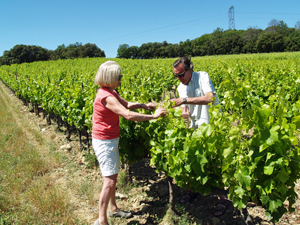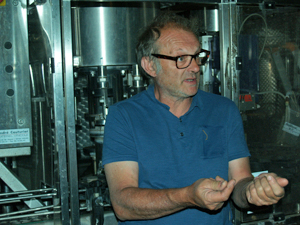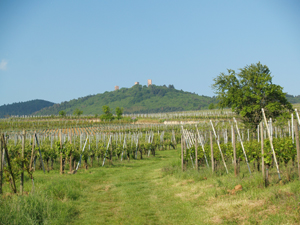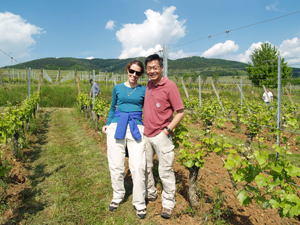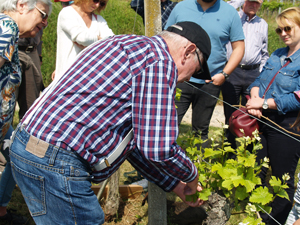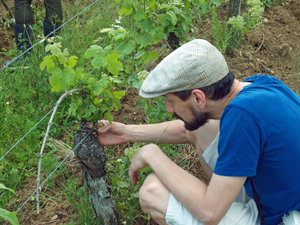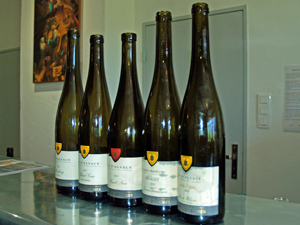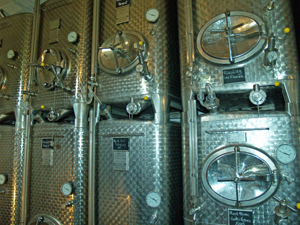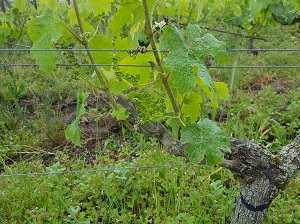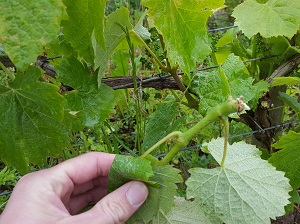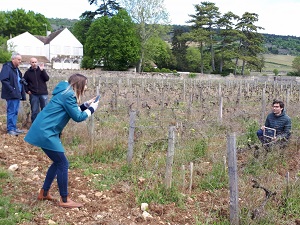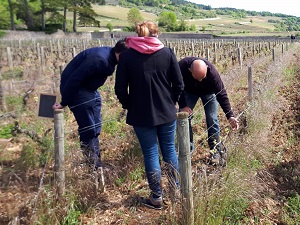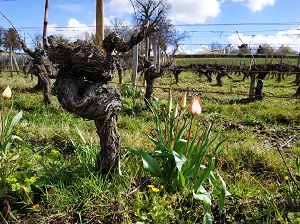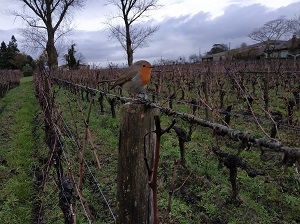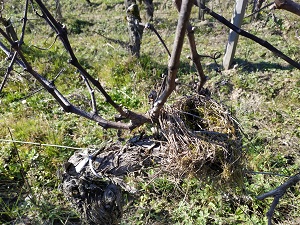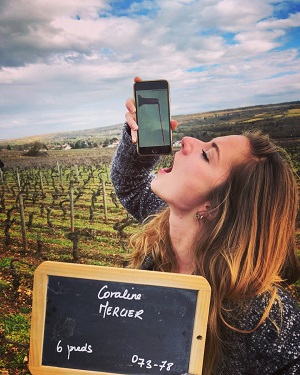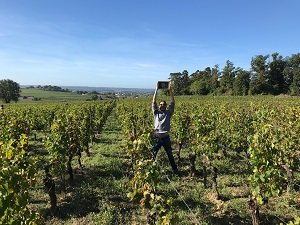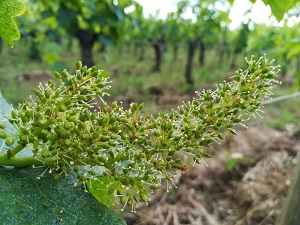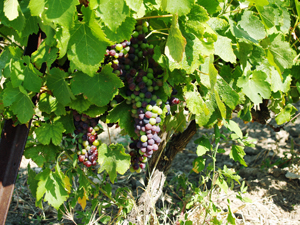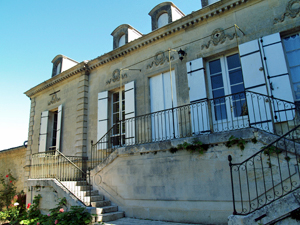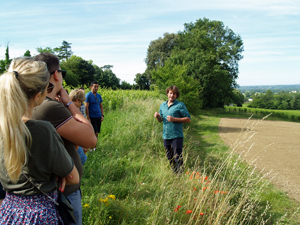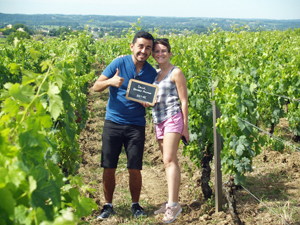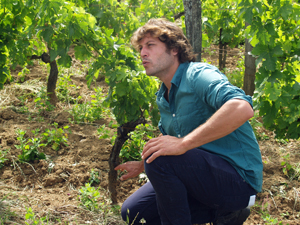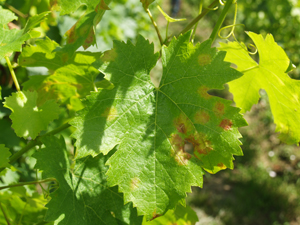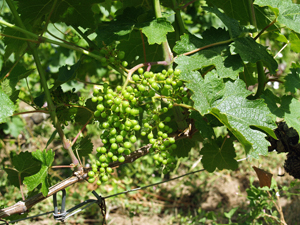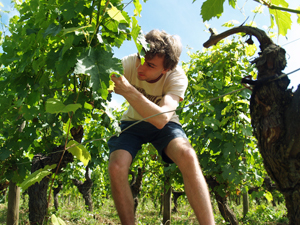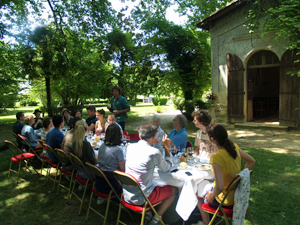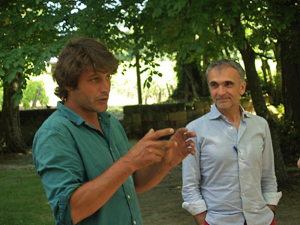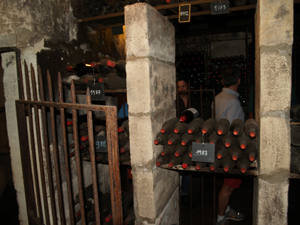We listened with great interest as Céline introduced us to the Alsace wine-growing region and the winery, which she took over with her brother Stéphane from their parents to become the 4th generation of wine-makers in the family.
She then took us into the vineyard where she explained the terroir and layout of the plots of vines. The winery has 12 hectares of vines spread out over 74 different plots. It allows Céline and Stéphane to work with all of the 7 Alsace grape varietals on different types of soil, and to achieve a great diversity in their wines. The winery has the good fortune to boast 3 Grand Cru plots in the Steingrubler, Pfersigberg, and Hengst vineyards. But it also means that there is much more work for the wine-makers to do, as they are constantly moving around to manage the different plots.
Stéphane brought us up to speed with the work carried out in the vineyard since the last harvest, such as pruning using the guyot double method, pulling the cut branches away, and attaching the remaining ones to the training wire. With a yield of just 45 hectolitres per hectare on average, and as low as 17 hl/ha for the old vines, compared to the 60 hl/ha authorised by the AOC, the winery voluntarily reduces the amount of grapes produced with the aim of producing exceptional quality grapes.
After pruning, the soil is tilled to loosen and aerate it, which also helps it to soak up the rainwater. Despite a month of continuous rain in the spring, with the return of the high temperatures, some of the vines lower down on the plain have started to suffer from drought.
We then headed to the Rosenberg vineyard to see our adopted pinot gris vines. The Rosenberg vineyard is fairly large, and is cut into lots of small plots. The name means the rose hill, because traditionally lots of roses were planted at the beginning of each row to warn against mildew. We took a few photos of our vines, and saw how the vines had grown so far.
The vines flowered some 3 to 4 weeks later than the last 3 years, but is more in line with a “normal” year. The branches have grown lots, and so they have been placed in between training wires, and the unwanted non-fruit-bearing branches removed.
It’s important to ensure the vines are contained between the training wires to make it easy for the tractor to pass through the rows, to improve the efficiency of photosynthesis, and to reduce the risk of disease if the leaves remain wet. At Domaine Stentz-Buecher the training of the vines is done by hand. It can be done by machine as we saw in a neighbouring plot, but Stéphane prefers not to as it can break many of the young shoots.
We remove the young shoots that won’t become fruit-bearing as they drain energy from the vines. In a plot next to our pinot gris vines, there were some unwanted shoots growing from the vine trunks, and so that became our mission for the day. Stéphane explained that we needed to remove any shoots growing from ground level up till around 20cm. Above 20 cm, we leave the branches because they can be useful for becoming the new branch left after pruning next year, useful if a branch breaks or has become too old and unproductive. Any branches that remain are held between the training wires so as to not fall across the row where it would be at risk from being damaged.
To remove the branch, we slide our finger into the hollow between the branch and trunk, and push downwards until it falls away. We then spread out to de-bud a row each. It’s not a very complicated task, but when you’re bent over under a blistering sun, we quickly understood why Stéphane prefers to do so at 5am, and how long it must take to do all of the winery’s vineyards with just 2 or 3 people! Especially so at the moment, as the vines can grow a couple of centimetres a day, and in a month a whole new branch may have grown and so you have to start again.
We worked diligently and then returned to the winery for a very well earned wine tasting session. To start with, Céline served a naturally sparkling Crémant, made using the same method used in champagne but without any liqueur added, making for a drier than normal Crémant.
We then tasted a Riesling Ortel, a Muscat, and a Pinot Gris Rosenberg to appreciate the diversity of the Alsace grape varietals. We finished with a Pinot Noir Granit, one of the red wines made at the winery. We then continued the wine tasting over lunch of a traditional Alsace baeckeofe, regional cheeses, and blueberry tart.
After lunch, we headed into the coolness of the cellar. It had been redesigned to work using gravity as much as possible from the moment the grapes are put into the press and vats. We saw the grape press and the room where the wines ferment in century old wooden casks, and the barrel room where the red wines and some of the whites are aged.
The day ended in the wine library where the oldest vintages are stocked, before concluding the day. We learnt much about nurturing the vines, the winery’s philosophy behind making organic wines, and we met some fascinating people. Many thanks to Céline and Stéphane for this great moment shared. We’ll be back for the harvest!



